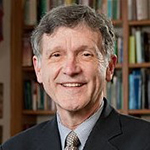By Bill Leonard
 On Feb. 10, 2015, three Muslim students at UNC-Chapel Hill — a married couple and her sister — were shot by one of the “neighbors” in their apartment complex. The New York Times reported: “The victims’ families described it as a hate crime. The police said the shooting appeared to have been motivated by ‘an ongoing neighbourhood dispute over parking,’ but that they were investigating whether religious hatred had contributed to the killings.” “Religious hatred?!!” And people loved darkness rather than light because their deeds were evil.
On Feb. 10, 2015, three Muslim students at UNC-Chapel Hill — a married couple and her sister — were shot by one of the “neighbors” in their apartment complex. The New York Times reported: “The victims’ families described it as a hate crime. The police said the shooting appeared to have been motivated by ‘an ongoing neighbourhood dispute over parking,’ but that they were investigating whether religious hatred had contributed to the killings.” “Religious hatred?!!” And people loved darkness rather than light because their deeds were evil.
In The Holocaust Kingdom, Alexander Donat recounts “Lena’s Story” in which a survivor of the camps declares: “I cannot describe even a fraction of the horror that was Auschwitz, but what I did see was enough to make me lose forever the notion that man was created in the likeness of God.” And people loved darkness rather than light because their deeds were evil.
Whatever the somber season of Lent holds, surely it offers spiritual/liturgical/personal moments to confront the presence of evil in the world, and repudiate it as passionately as possible. Sin is ruthless enough; but evil is sin that goes beyond rational interpretation. During Lent, especially, might we distinguish between sin and evil? Catholics do — delineating venial and mortal sins, the former a “forgivable” unrighteous act that does not cut one off from God; the latter so wrongful that it stretches even God’s radical grace to the limits.
This Lenten season, let’s differentiate between sin and evil. Sin is terrible, true enough, carrying us into brokenness; making us desperate for reconciliation. But evil takes sin into another realm, beyond the range of human endurance. Evil involves a sinful intentionality that is filled with deliberate malice.
In New Seeds of Contemplation, Trappist Thomas Merton wrote: “There is nothing interesting about sin, or about evil as evil. Evil is not a positive entity but the absence of a perfection that ought to be there. Sin as such is essentially boring because it is the lack of something that could appeal to our wills and our minds. What attracts [humans] to evil acts is not the evil in them but the good that is there, seen … with a distorted perspective. … Sinners are people who hate everything, because their world is necessarily full of betrayal, full of illusion, full of deception. And the greatest sinners are the most boring people in the world. …”
To murder three innocent students because they are Muslim is a terrible evil, but to do it over a parking space is evil beyond comprehension. When the Oklahoma University “frat boys” sang their racism on that bus, they committed a terrible sin, but when they added a verse about hanging a black person they crossed over into abject evil. Words and history have meaning on the bus, the parking lot, the Internet, or in the pulpit.
We Christians may become so familiar, with the cross-event that we overlook its radicality. To believe in God is difficult enough, but to believe that God acted in Jesus to redeem us is the great hope and gamble of Christian faith.
John’s Gospel starts out looking for the light, and finding it in Jesus. “The light that enlightens everyone has come into the world,” John declares of this Word that became flesh and dwelt among us. Then, as if preparing us for Lent and the cross, he adds: “The light shined in the darkness and the darkness could not put it out.”
Sometimes we get so enchanted, so captured, by evil that we can’t escape. Sometimes grace breaks through. This January, seminarians in the Appalachian religion course we run in Burnsville, N.C., heard the “testimony” of a twenty-something Appalachian named Adam who recounted a life of youthful “screw-ups” — cooking Meth, drinking hard, driving fast — all brought to a cathartic end by a horrific pickup crash in which he and his friends were all spared from what should have been certain death. Realizing the grace of that terrible moment, Adam says he “received Christ as his personal Savior,” much to the delight of his Free Will Baptist mother who shouted God’s praises for days. Adam now preaches at the county jail, where he knows he would have wound up but for the fact that none of his friends died in the wreck, and the judge, like Jesus, gave him a second chance. His classic conversion is so transforming that one seminarian observed: “Even the Presbyterian students” were reduced to tears! Perhaps Adam found a way out of sin before it descended into evil. Think about it.
At Lent we confess that the way to the light often leads straight through the darkness. To get to Easter we’ve got to go through Golgotha. And in one of life’s greatest ironies, the terrible sign of death becomes the profound promise of life.
So if the Jesus-story and the cross can’t transform, not just dreadful sin, but rampant evil, then it’s not much help at all. John better be right: “The light shined in the darkness and the darkness could not put it out.” We can only hope.
